#rpg maker 2000 tutorial
Explore tagged Tumblr posts
Text
youtube
#srpg#srpg studio#rpg#rpg maker streamer#rpg maker tutorial#srpgstudio#tutorial sprites rpg maker#rpg maker tutorials#rpg maker streaming#rpg maker mv tutorial#rpg maker tutorial mv#rpg mv#free rpg maker#rpg maker 2003 tutorial#rpg maker 2000 tutorial#unreal#rpg maker vx ace tutorial#rpg maker tutorial video#stream#rpg maker unite tutorial#rpg maker review#rpg maker horror#rpg maker tutorial series#tall character generator rpg maker#rpgm2k3#rpgmaker#gamedev#synrec#coding#youtube
0 notes
Text
Tutorial ( kind of ) on how I modded my 3dsXL to play rpgmaker 2000/2003 games,since all the guides I found are SUPER old....
I uploaded this on twt but it wasn't very comprehensive TᴖT
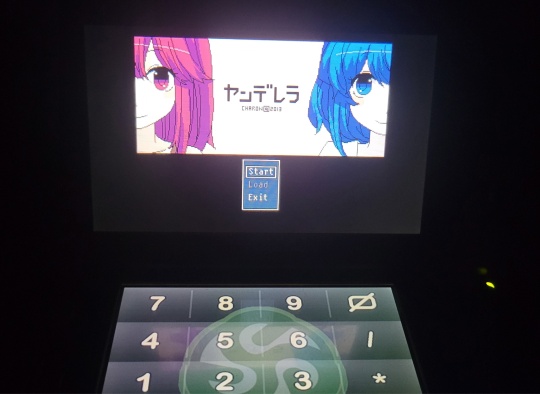
example!^^^^
apologies for horrible photo quality... my room is a mess so for now the darkness will have to do ( ´ ω ` )

⚠︎ ! I figured a lot of this out by playing around with my 3ds. I'm 99% sure there's a better way to do this. Feel free to reblog a better version based on this version. It's basically a prototype guide,aka please proceed with caution ! ⚠︎

what you need :
modded 3ds
homebrew launcher
FBI
easyrpg player for 3ds files ( both the 3dsx and cia file )

1. Insert sd card into computer
2. go into sd>3ds, then add 3dsx files within the 3ds folder.
3. while still in the 3ds folder, create a folder inside of that called easyrpg-player
4. insert sd card back into 3ds,open FBI and click into SD,then from there, you should see 3ds.cia
5. click into that ( I clicked delete and install but tbh I think it's better to just click install for this )
once easyrpg player is on your device ur like halfway there


Now download any games you want. I got mine from here
6. insert sd card back into computer
7. go into sd>3ds>easyrpg-player,and insert the files in there.
If they are rar files make sure to extract them by clicking extract as /"file name" or extract as folder depending on your computer

in case you're curious,some I used tested are
paranormal syndrome : loaded for the most part other than sprites
the gray garden : works fine but slightly laggy
watgbs : works fine but oomfs told me to make sure to save your game alot!! so yeah
mix ore : works great
yanderella : works great

last part !
insert sd card back into 3ds,open easyrpgmaker,click into games,easyrpg-player,and all your games should be there !

feel free to ask any questions and I shall try my best to answer them! thank you for reading and I hope I could help,even if it's just a tad bit

4 notes
·
View notes
Text
0 notes
Text
My first instinct was "whichever one is on sale for cheapest" because there's so many transferable skills, any Maker is an entry point to the series. But each version has it's own perks.
2003: The oldest version released in the West for PC. If you want to start simple, this is a good spot. Lower resolution means it basically forces you into a pixel style, though, and it doesn't support adding code in later once you become more adept with the system. A lot of famous Japanese horror games were made in 2003 or it's closely related Japanese forerunner, RPGMaker 2000. Which may be an incentive to try it out, I don't know.
MZ: Newest version. Lots of quality of life enhancements. Has a built-in tutorial so the learning curve is less steep and you'll spend less time hunting down beginner tutorials online. If you have the funds, I think this would be my top rec for a newcomer just for that.
MV: The precursor to MZ. A solid RPGMaker with lots of resources and tutorials online. Lacks some of MZ's features, though. The wealth of available plugins (extra code made by fans, many of which just drop in so no coding is necessary) means that this is still an attractive option.
VXA: The 2012 RPGMaker release. It's a solid engine that you can get a lot out of, too. There's a lot of resources and tutorials online but because of the age, websites are starting to disappear. I found the coding language easy to parse and even started learning how to edit existing scripts on this one, before MV came along and distracted me. So I think VXA is a good learner engine.
XP: An even older model. While all the above versions are very similar, this one has some differences that may make the learning curve steeper when starting off or when switching between Makers. And again, because of the age, the resource websites are disappearing and the volume of lost resources is starting to be annoying, in my opinion.
VX: Don't get this one, actually. It's extremely similar to VXA but lacks some of the flexibility and functionality. You'll still learn on it, sure, but every other RPG Maker is a better option, so I don't think there's value in starting here.
Anyone know which rpgmaker version would be the best for a beginner? I’ve been hesitating because I have no coding experience  and I saw that rpgmaker is a good place to start, but I cant decide which version to get.
3 notes
·
View notes
Text
Guys who make RPG maker 2000 and 2003 game, please, I mean PLEASE modify RPG_RT.ini file for everyone’s convenience in order to not forcing users installing RM2K or 2K3 RTP.

Just add ‘Fullpackageflag=1′ on RPG_RT.ini files and put some vital files like:
Pictures for title screen on ‘Title’ folder.
‘System2c’(Default) file on ‘System2′ folder.
Pictures for menu on ‘System’ folder.
‘Vehicle’(Default) file on ‘Charset’ folder.
After setting those vital files, you will be able to execute RPG_RT.exe without installing any RTPs.
Here’s a proof of it.
265 notes
·
View notes
Note
hello! so i have been a fan of 2kki (mainly your work) for awhile and have always been curious as to how you and other developers make their worlds. after surfing the internet for quite sometime though there appears to be little to no information about how the worlds are made, probably because of how obscure 2kki and these games are (or maybe i haven't looked in the right places). ive heard some are made in painting programs such as mspaint but im not too sure on that either. if you are not allowed to give it out then that is totally fine! please do not feel pressured to. thank you! have a good day/night!
I think what you're looking for is a general guide on making RPG Maker 2000/2003 chipsets.
So in RPG Maker 2000 and 2003, each map gets assigned a chipset, which is a 480x256 image containing the tiles used to make the scenery. Each tile is 16x16 pixels, and they're made to look like different things (like walls, foliage, floor, etc). Using those basic building blocks, we construct our worlds. The chipset is divided into 3 sections: Autotiles, lower layer tiles, and upper layer tiles. Autotiles are kinda complicated to explain and you don't have to use them, so I'll skip that part. Lower layer tiles are best for things that take up the entire 16x16 square: like flooring texture, walls, etc. Upper layer tiles are best for stuff like plants, furniture, etc.
You technically can use MS Paint, but it's not ideal. I use GIMP, which you can make layers with, which is something you really, REALLY want with pretty much any art program.
Honestly, if you're totally new to pixel art, I'd start with looking up pixel art tutorials. Once you have a basic grasp of that I'd recommend looking up tutorials on making chipsets for RPG Maker.
13 notes
·
View notes
Note
Hey Zu! I just wanted to ask you do you play any games? And if you do play games. What games do you play?
Hii! Oh I used to play a lot. ★
Most of them are visual novels and (J)RPG. Danganronpa, Ace Attorney, Persona, OFF, Wadanohara, Ib, The Grey Garden, Mogeko Castle, Witch House, Mad Father, Misao, To The Moon, Angel of Slaughter, Liar Liar, The Arcana, Undertale after all heh, — these are great. ♡ I've even learned to work with RPG Maker 2000/2003 to make games myself (๑˃̵ᴗ˂̵)
I can talk a lot about each one, and I highly recommend to look into at least some of them (be careful since most of them are horror rpg).
Now I kinda have no time for this ;3; The only game I've been checking out lately is MazM's Jekyll and Hyde (mobile version), to collect coins and unlock Hyde's timeline story,,, is the thing. <3
UPD:

Thank youuu! (〃ω〃) Actually the most difficult thing there is event commands & conditions but there are a lot of good tutorials for them as well ☆
20 notes
·
View notes
Text
Friday Special #7
January 9th, 2021
So it has come to my attention that when people talk about RPG Maker the series, many aren’t aware of how far back the series goes.
Did you know that series dates back to almost thirty years?
That’s right, next year will be the 30th anniversary of RPG Maker!
So why don’t we have a history lesson into arguably one of the most important franchises in gaming history?
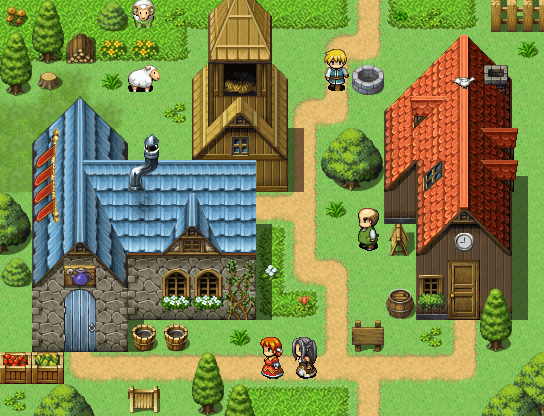
Alright, where does the story begin for this iconic series?
According to sources, there has been games similar to RPG Maker that were made by ASCII (the original company behind RPG Maker) and that were released as far back as 1988, with the following titles:
Mamirin (1988)
Dungeon Manjirou (1988)
RPG Construction Tool: Dante (1990)
Dante 2 (1992)
Chimes Quest (1992)
The very first official RPG Maker title came in the form of RPG Tsukūru Dante 98, released on December 17, 1992. This game, along with its 1996 sequel RPG Tsukūru Dante 98 II, was originally made for the NEC PC-9801 Japanese home computers at the time. It was originally made when ASCII pulled from other games (listed above) and combined them together to create a RPG-making development title with its own toolkit. The genre of RPG specifically was thanks to the rise of JRPGs in recent years like Dragon Quest and Final Fantasy to name a few.
The next major release of RPG Maker was in the form of RPG Tsukūru: Super Dante in 1995, which marked the very first time that the series has landed onto a console. The console was the Nintendo Super Famicom and it was later broadcasted a year later using the Satellaview service. While it did exhibit some restrictions in terms of content due to system limitations, it was famous for providing hundreds of character, monster and scenery assets with color swap palettes to save on memory in the cartridge as well as designing the stats of characters and monsters pre-determined by the player. It was said that the game was popular with players but sources are limited about actual reviews. RPG Tsukūru 2 is the sequel and it was released in 1996 on the Super Famicom as well.
Windows saw the release of the third installment with RPG Tsukūru 95, which was released in 1997 and was the first of many RPG Maker titles for Windows. Unlike its predecessors, it boasted higher resolution in sprites and tilesets as well as higher screen resolution. It also has the honor of being the first version to have an unauthorized English translation and release due to demand. Also with this version, the number of party members was boosted to 8 people with the first 4 acting as the main battle party. RPG Tsukūru 95 Value! was released not long after with the added bonus of having Windows XP support, which was new at the time and very valuable.
So when did the West finally receive an official version version of RPG Maker?
On November 27, 1997, Enterbrain released the following title RPG Tsukūru 3 for the original Playstation and chose to release the software simply as RPG Maker in the West three years later on October 2, 2000 under Agetec. This was the first time the West would finally receive a version of RPG Maker and experience the magic of RPG development, but it was reported that a limited run of copies were released outside of Japan. It was also one of thirty games that utilized the now-rare Playstation Mouse (which is usually an arm and a leg to import). Players got to customize their own assets using the Anime Maker that was also built into the game and, like the original Super Famicom versions, utilized color-swap palettes to save on memory. Another cool feature that was a first for the series was saving your created game onto a memory card so that you could share your creation with your friends.
One of the most beloved and popular versions of RPG Maker is next on the list and it is RPG Tsukūru 2000 for Windows on April 5, 2000. Despite the popularity, it was Japan-exclusive and it featured a lower resolution for graphics and assets overall than its RPG Maker 95 predecessor. Despite this, it boasted more functionality with unlimited sprite sheets and tilesets.
The last in that trio was RPG Tsukūru 2003, first released only in Japan in 2003 before being released worldwide in 2015. Improvements to this version included the side-view battle system that was popular in Final Fantasy, and interchangeable resources. From this point, the development company Enterbrain would take over RPG Maker as it was part of the ASCII company.
Starting with the released of RPG Tsukūru 5 on the Playstation 2 in 2005, Enterbrain was starting to look into developing the series for an international audience of players. They would beginning to craft titles that are now iconic in the RPG development community, with the first of these releases being RPG Tsukūru XP (RPG Maker XP as it was known world-wide) released on Windows in 2004. While many of the simplified features have been removed from this version, it was the first RPG Maker game to use Ruby, a type of programming language first seen in 1995, and it was the first title to distribute assets online amongst the community thanks to the rise of the Internet. It allowed greater control over sprite size other gaming aspects, which helped it become more versatile than previous titles. However, a drawback is the steep learning curve, which was intimidating to new players. It was released to Steam in 2015.
The next modern RPG Maker title was the release of RPG Tsukūru VX (RPG Maker VX as it was known world-wide) in Japan in 2007, world-wide in 2008. It has the one-up over XP for its more user-friendly layout and faster framerate of 60fps over XP’s 40 fps. The programming was completely done over to be more accessible in scripting and the battle systems were now similar to Dragon Quest with a front-view battle system and detailed text. Because of these aspects and other improved features, it became a popular choice for modern developers since release. However, one of the biggest drawbacks was the lack of support for multiple tilesets when mapping that frustrated players. It was released to Steam in 2016.
Right after that, RPG Tsukūru VX Ace (RPG Maker VX Ace as it was known world-wide) was a direct sequel to the version mentioned above. Described as an “overhauled version of RPG Maker VX”, it removed the multiple tileset issue that plagued players in the previous version and re-introduced battle backgrounds during battle scenes. Magic and skill systems were re-worked to have their own recovery and damage formulas in the programming, and a new set of music tracks were accompanied in the database files. It was released to Steam in 2012.
Having the distinction of being released by Degica for the first time world-wide, RPG Tsukūru MV (RPG Maker MV as known world-wide), underwent quite a few adjustments by introducing multiplatform support as well as side-view battles and high resolution features and assets. For the first time, JavaScript replaced Ruby as the default programming language. Players also saw the return of layered tilesets, which were missing from the previous installments. Not only was it released for Windows, but also for PS4 and Nintendo Switch (A XBox One version was planned but unfortunately scrapped), giving players new ways to share games. It was released to Steam in 2015.
The newest installment to the famous series is RPG Tsukūru MZ (RPG Maker MZ as known world-wide), and it was just released last year in August of 2020. Reviews for the game were mixed as players noted that the trailers leading up to release were very similar to RPG Maker MV. It did have some positively-received features such as autosave functionality and XP-style autolayer mechanics. It was released to Steam in 2020.
So with the history side taken care of, what about some of the most iconic games ever made using the software?
Good question! Given the extensive list of successful games to come out of RPG Maker, that will be a separate Friday Special so I can cover them more in-depth. Maybe next week perhaps?
So there you have it, a comprehensive history of RPG Maker!
(Now, there were some older Japanese titles that weren't mentioned because of lack of sources, I do apologize. I also wanted to stick more to the major installments of the franchise itself.)
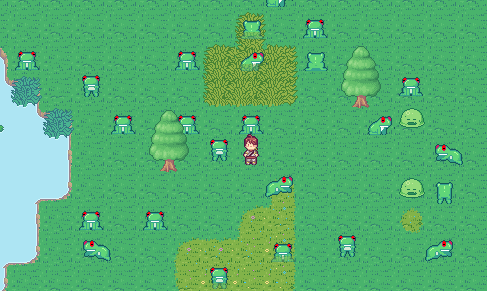
Thoughts From The Head
I was formally introduced to RPG Maker by some mutuals of mine on Discord a few years ago when I expressed interest in wanting to create scenes like a movie of sorts. My software of choice is RPG Maker VX Ace as it was suggested to me for being better at creating events than any other version. It's understandably intimidating at first, especially for newcomers, but there are hundreds of tutorials on Steam, Youtube and all over the internet.
I also have other copies of RPG Maker, including the PS1 version of RPG Maker and even RPG Tsukūru: Super Dante for my Super Famicom that I just received a few days ago! It's definitely wild how much the series has grown and improved upon over the years.
From what I have been recommended by friends who are long-time players of this series, either go for RPG Maker MV (if you're interested in mapping) or RPG Maker VX Ace (if you're interested in creating events). From what I have seen, those two are some of the more popular choices. In terms of platform, always go for Steam (and get them on sale when you can) because you will have better accessibility and it's more user-friendly than the console versions. The abundance of community-generated assets also help.
To end this post, here's some pics from RPG Tsukūru: Super Dante!
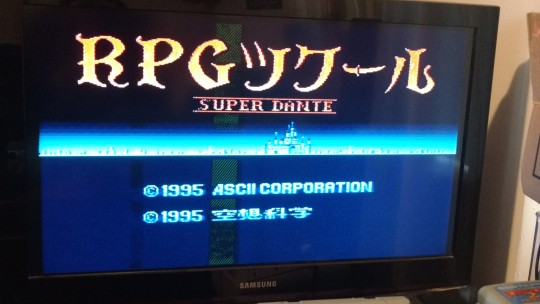
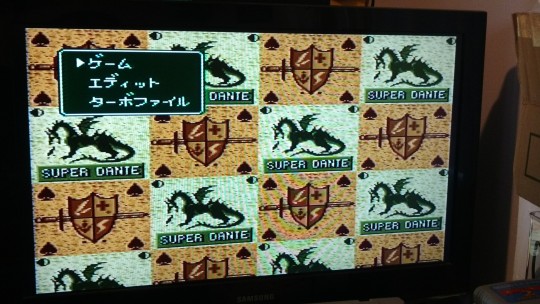
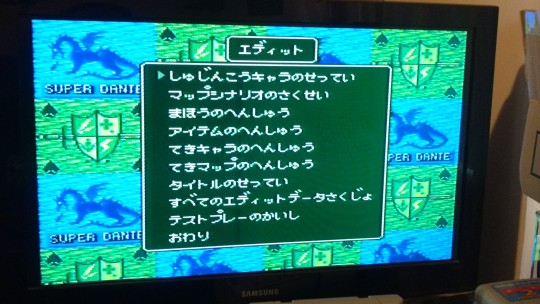
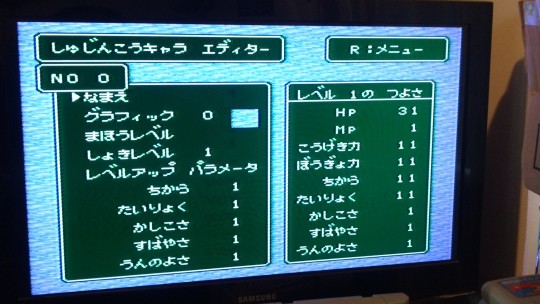

#been wanting to make this for a while#hope you learn some new things!#my voice!#friday special#gif#gaming#retro gaming#irl
15 notes
·
View notes
Note
what's the most common mistake you've seen people do while making an rpg maker game?
Designwise or plotwise? Because designwise, the answer is EASILY just sticking with the default font. Even if the rest of your game is totally default assets, just changing the text font can go a long way. It doesn’t have to be anything super fancy, either. If you have a pixel theme going, go with 8bitoperator. If you’re going for high fantasy, pick out a nice serif font (serifs are the fancy little lines that stick off of letters in fonts like Times New Roman). If you want something more modern, I’m a huge fan of Myriad Pro. If you want something less serious, CreativeBlock BB is a good standby. Just make sure your font is readable. (note- this doesn’t apply to games made in RPG Maker 2000 or 2k3 because the option to mess with game code didn’t even come about until XP).
Plotwise, though, is much harder to pin down. Everyone has their own way of going about things, so I can’t just point to one thing and say ‘this is the problem’. One thing that’s really come to my attention lately after playing more modern and retro rpgs in succession, though, is how much you’re explaining to the player. Retro RPGs have a really, really bad habit of saying ‘go do the thing’ with no indication of how or where or more importantly WHY you should be doing the thing. It’s fine to leave some stuff to the imagination, but I’ve spent entirely too much time in old RPGs being lost and confused and frustrated because the game told me to do something, but I don’t know how to go about it, or something just suddenly happens out of nowhere without warning because the plot demands it. Don’t do this, we have more than 128 Megabits of memory at our disposal now, there’s no shame in explaining what’s going on, either visually, verbally, or through storytelling.
On the other side of this coin, though, is OVERexplaining. If you have some game mechanics that might not be common knowledge, feel free to do a tutorial, but a lot of modern RPGs do have a sort of tendency to hold a player’s hand to the point of it being kinda annoying. Let players figure things out for themselves, but don’t leave them completely in the dark. It’s a fine line to walk, but if you’re able, getting other people to look at your work and give you their opinion is probably the best way to make sure you have a good balance in your writing.
That’s all I got for now, lol
9 notes
·
View notes
Note
Hey Pinkuboa, sorry for these somewhat weird questions but I feel like I need to ask them as they've been bothering me - firstly, what hardware would you recommend for playing and creating YN fangames, as in OS and such? Also, where might I go to talk to other members of the YN community? Links would be massively appreciated. Thanks very much in advance.
Nah, that’s a good question to ask!
Most Yume Nikki fangames require Windows to play them, as all RPG Makers before MV are windows exclusive software. If you don’t have a Windows OS, check out RPGHub or Wine for Mac OS. You don’t actually have to have much else once you can run the game, RPG Maker games don’t require that much processing power to run! However, Yume Nikki fangames can have various technical difficulties, so keep this page in your bookmarks. And remember: you have to switch your computer’s local whenever you want to play Japanese RPG Maker 2000/3 games. That page will tell you how depending on what version of windows you’re running.
For creating Yume Nikki Fangames, RPG Maker 2003 is the engine Yume Nikki was originally made on, but fangames can be made on any RPG Maker engine. I suggest RPG Maker above others if you have no coding experience and need tutorials to help get you through. If you already have experience with 2D engines like Construct 2 or Unity you could use those as well.
We got 2 Yume Nikki Discords open right now, this one and this one. There’s also Dream Diary Jam’s discord which is open for the duration of the jam (plus or minus 2 weeks), so if you want to watch some nerds make Yume Nikki fangames for the next two weeks you can check that out as well.
Good luck, hope this helps ya out! c:
12 notes
·
View notes
Note
First of all, holy cow you're amazing, just getting that out of the way; otherwise this ask would be huge. Second, what programming software do you use? I now want to try to program a game, but don't know any good software. Thanks!
Aw, you’re sweet! Thank you, you’re amazing too! <3
I uh… I practically wrote a novel about game making programs… so I’ll put everything under a read more:
(i hope you can see the read more button cause it doesn’t show up for me on mobile)
The program I’m using is called RPG Maker, specifically the 2000 version, which is very intuitive and reliable despite being so old. There are loads of different versions, each one more polished than the last, and they’re all available on Steam!
I’m no programming expert, so the simplified commands allow me to do whatever I want without having to learn a coding language. It may look complicated at first, but once you learn the basics you can do quite a lot of cool stuff with it. You can even make your game for iOS and Android if you use the latest version of the program!
RPG Maker is advertised to be simple enough for children, but powerful enough for game developers, and that’s true! I first started working with this program when I was about 9 or 10. It’s got a special place in my heart for sparking my love of game design.
The community for RPG Maker is huge!! There are lots of websites and forums you can go to if you have a question or need help programming something. There are even large libraries filled with music and graphics that people have created for others to use, free of charge! If you want to go deeper down the rabbit hole, fans of this software have created add-ons that allow you to alter the way your game plays. You can do all kinds of things using these unofficial patches, but you do have to know how to code things, which can get very difficult. Personally, I don’t use add-on programs. I would be too scared of accidentally destroying my game or something crazy like that!
Some famous RPG Maker games include: Ib, The Witch’s House, OFF, and To The Moon.
I’m not sure what your budget is, but the latest version of RPG Maker, MV, costs $79.99 at its core, and $129.99 if you get the bundle, which I assume has more stuff. If you want the version I’m using, it costs $24.99. If you’re interested in getting an RPG Maker, I’d recommend waiting for a Steam Sale, or check the website Humble Bundle for any sales they might have. Buying a game there gives you a code you can redeem on Steam, plus part of your purchase supports a charity of your choice!
Summary: Great and simple program, not free, large community of smart helpful people.
Link to the latest version: http://store.steampowered.com/app/363890/
-
Another suggestion is Stencyl, a program that also doesn’t require much coding knowledge. As long as you’ve got a basic grasp of math, this should work just fine!
The programming style of Stencyl seems a bit limited, I’ve seen this kind of software before, but I don’t have it myself so don’t take my word for it. It’s a fair bit more complicated than something like RPG Maker. You’ll need a basic grasp of how programming works before you start, but there are loads of tutorials on the site to help you get started, in case you need help.
The program works by dragging and snapping together snippets of pre-made code to make long strands of mathematical goodness. I personally don’t like this style of programming, but you can try it out for yourself and see how you like it! There are loads of cool games people have made with this program, however the community doesn’t seem to be as large as RPG Maker’s.
There’s a free version of Stencyl, but only allows you to publish games online. You won’t be able to make downloadable (Steam-type) games or mobile games.
When it comes to the other versions, you don’t pay for this program up front like RPG Maker or GameMaker: Studio, instead you pay once every year, and the price depends on which version you have. The “Indie” version costs $99 a year, while the “Studio” version costs $199 a year. It’s pretty expensive, but not as bad as our next contender below!
Summary: Interesting program, good for learning how to code, has a free version
Link to their website: http://www.stencyl.com/
-
You could also try GameMaker: Studio! I don’t know much about this program, but I’ve heard good things about it. If you need a selling point, I believe Undertale was made using it. It seems pretty intuitive, and there are a lot of tutorials available on the website, if you need help!
GameMaker is the most unique out of the bunch, offering many different tools for you to use. It’s sleek and polished, with loads of options for you to choose from. It may take a while to get used to this one, it looks like a lot to take in, but with enough practice you could create a best-selling game, just like Mr. Toby Fox!
You can get a free version of this program which has a lot of the same features as the full versions, but you have limited distribution options.
The other two versions of GameMaker are incredibly expensive, with the standard version being $149.99, and the fancy ~master~ version being $799.99. That, ah, is a little absurd. Don’t get the super expensive one. Love yourself. Just…. no…….. why would it be that expensive oh my god…… do they even realize how many Delicious Taco Bell Tacos you could buy with that kinda cash??? mmmmno i dont think so. this is a really long post is anyone still reading at this point? hello?
Ahem, ah, anyway.
Summary: Great program, more complicated, has a free version, the paid versions are BEYOND expensive.
Link to their website: https://www.yoyogames.com/gamemaker/studio2
-
So those are my picks for high-quality game designing programs for beginners. It’s tough finding good software that’s free, actually it’s almost impossible. But, if you do pay the money to get a nice program and put in the hard work and dedication necessary to create and sell your game, the software should pay for itself!
Alternatively, you can find online tools designed for schools and colleges that allow you to make small games, usually for free. I’ve seen a few and they’re pretty good if you’re just starting out and you want to learn how to make games. Try Googling “free online game maker” and see what you find!
Yikes those are just a few of your options for programming. Don’t even get me started on art and music software!!
Sorry this turned out so long, I wanted to be as helpful as possible. (I think I went a little overboard… whoops)
Let me know if you have any questions! <3
#this took me like 2 hours to write lol i need to stop doing this#im so sorry this is so long xD asdfghjkl#Anonymous#eddsworldarmageddon asks
12 notes
·
View notes
Text
Yume Nisshi (Yume Nikki Fangame) - Part 3 [Finale] | Flare Let’s Play:
youtube
Welcome to the finale of Yume Nisshi, a Yume Nikki fangame made in RPG Maker 2000 by Zenmaigahara and translated into English by HimeNikki. We play as Usotsuki, a sleep walker that is unwilling to leave the premise of their bedroom to dream, by exploring the realms of their dream can we find clues towards Usotsuki's dark and enlightening past events.
All effects you can find in the 0.03 version of Yume Nisshi can be found in this video, including a few events not stated on the YNFG wiki page. Yume Nisshi is a large fangame with a lot of simple but great maps, with only a few enemy NPC's, this YNFG is quite friendly to new players.
Download: http://www.mediafire.com/download/kav5fbgpjdkfevb/Yume%20Nisshi%20v0.03%20(English)%20-%20Brand%20New%20Version.rar Zenmaigahara: https://twitter.com/YumeNisshi HimeNikki: https://www.pixiv.net/member.php?id=9014536
Thumbnail art by MantaTheMisukitty: http://www.deviantart.com/art/Usotsu-quickie-679465202
#Yume Nisshi#Usotsuki (Yume Nisshi)#Yume Nikki#Yume Nikki Fangame#Role Playing Game#Zenmaigahara#HimeNikki#RPG Maker#RPG Maker 2000#Effects#All Effects#Events#Video#Tutorial#Free Game#Download#English Translation#Translation#FlareBlitzed#flareblitzedyt#Flare Let's Play#Let's Play#Walkthrough#Playthrough#Full Walkthrough#Lucid Dreaming#Dreaming#Lucid Dream#Dream
0 notes
Video
tumblr
Proof of this post
0 notes
Text
A Lenda do Manual
Este projeto está descontinuado.

Navegar
Introdução
Galeria
Jogar 🎮
História
Informações
Como Jogar?
Requisitos
Créditos
Observações Adicionais
Versões Anteriores
Histórico de Atualizações
Extras
Créditos da Página
Introdução
youtube
Você algum dia em sua vida já pensou em fazer aquele Manual de skate? Em A Lenda do Manual, o jogador é desafiado a completar a manobra – o lendário Manual – com maior pontuação que puder fazer.
A Lenda do Manual não é difícil de jogar. Sua jogabilidade é completamente básica, mas requer bastante de sua atenção na tela. Assim que o jogador interage com o skate para começar o desafio, precisará ficar de olhos e dedos atentos no caminho onde Greg está percorrendo, e no equilíbrio do skate.
O jogo envolve diversas piadas com relação à vida pessoal dos desenvolvedores do jogo, e piadas com relação ao bairro de Sepetiba, da cidade do Rio de Janeiro, trazendo conteúdo completamente cômico em seu enredo curto e também em sua jogabilidade.
Este jogo é repleto de segredos! Vasculhe tudinho.
Galeria

Explorar Galeria
Jogar
Versão: 13-05-2017.3 beta Formato: .ZIP Servidor: MEGA

Baixar A Lenda do Manual (Windows)
Outras alternativas de download...
História
Nosso protagonista – Greg – estava saindo para andar de skate e conversar com seus amigos – Sam e Jiin – na pracinha de Sepetiba.
Quando chegaram na pracinha, Sam, Jiin e Greg tinham uma conversa casual sobre assuntos irrelevantes para a história, então Greg teve uma brilhante ideia: pegar seu skate para tentar fazer o Manual. O Manual é uma manobra de skate que consiste em manter o skate equilibrado utilizando somente as rodas da traseira do skate.
Todos os moradores da pracinha de Sepetiba ficaram angustiados. O Manual é simplesmente a manobra lendária, e a mais arriscada de toda Sepetiba. Quando os cidadãos da pracinha souberam da notícia, logo começaram a dar atenção ao Greg. – Ele vai mesmo mandar o Manual? – Amparado, um cidadão questiona a ideia do Greg. Todos pareciam estar muito empolgados, e começaram a organizar torcidas. – Manda o Manual! – Queremos o Manual! – Vibrando de alegria e de exigência, clama todos que passavam pela pracinha, e quem também estavam por lá, incluindo os amigos de Greg.
Greg agora é obrigado à fazer a manobra até o final da pracinha sem desistir ou sem cair. Se o Greg cair, seu braço será quebrado. Se o Greg conseguir completar a manobra, será lembrado como uma verdadeira lenda do Manual.
Informações
Data de lançamento: 07/07/2017
Data de criação: 09/05/2015
Data da última atualização: 30/06/2019
Versão: 13-05-2017.2 beta
Progresso: Descontinuado
Engine: RPG Maker XP
Gênero: skate, puzzle, easteregg, comédia
Classificação indicativa: [PROVISÓRIO] Este jogo não é recomendado para menores de 14 anos.
Plataformas: PC [Windows]
Requisitos
Como Jogar?
Fazendo a instalação para jogar (arquivo .zip):
Consulte os requisitos do sistema, nesta página, e veja se o jogo realmente é compatível com sua plataforma.
Baixe a última versão do jogo.
Abra o arquivo que você baixou (A Lenda do Manual.zip).
Extraia todos os arquivos que estão contidos no arquivo zip (A Lenda do Manual.zip) para qualquer pasta de preferência de seu computador. Aconselhamos que extraia para a “Área de Trabalho”, “Meus Documentos”, “Jogos” ou qualquer outra pasta na qual você tenha acesso rápido.
Como começar a jogar (arquivo .zip):
Abra a pasta na qual você extraiu os arquivos contidos no arquivo zip que você baixou (A Lenda do Manual.zip) > Entre na pasta “A Lenda do Manual” > Execute o arquivo “Game.exe”.
Controles em jogo:
Ação Teclado Joystick Interface Seleção Cima / Baixo / Esquerda / Direita Cima / Baixo / Esquerda / DireitaConfirmar Seleção C / Enter / Espaço 3 (A)Retroceder / Cancelar X / Esc / [Num] 0 2 (B) Modo Normal Mover para Frente Cima CimaMover para Trás Baixo BaixoRotacionar para Esquerda Esquerda EsquerdaRotacionar para Direita Direita DireitaMover para Esquerda Q / Page Up 7 (LB)Mover para Direita W / Page Down 8 (RB)Interagir com o Cenário C / Enter / Espaço 3 (A)Golpear Z 1 (Y)Próxima Mensagem C / Enter / Espaço 3 (A) Modo Skate Equilibrar Cima / Baixo Cima / BaixoMover p/ Outro Caminho Esquerda / Direita Esquerda / Direita Comandos Adicionais Tela Cheia Alt + Enter Configurações RGSS Player F1 Reiniciar Jogo F12 Fechar Jogo Alt + F4
Requisitos
Mínimo:
Sistema: Windows 98 / 98SE / Me / 2000 / XP / Vista / 7 / 8 / 8.1 / 10
Processador: Intel® Pentium® 4 1,50GHz ou superior
RAM: 200 MB ou mais – Certifique-se de que você tenha a quantia de RAM adequada para funcionamento normal de seu sistema operacional.
Vídeo: Suporte à resolução 640x480 e High Color (24 Bits) ou superior
Áudio: Suporte à DirectSound
Armazenamento: 100 MB de espaço livre
Recomendado:
Sistema: Windows 7 / 8 / 8.1 / 10
RAM: 2 GB ou mais
Vídeo: Suporte à resolução 1024x768 e True Color (32 Bits) ou superior
Armazenamento: 400 MB de espaço livre
Créditos
Ver Créditos
Observações Adicionais
Este projeto foi descontinuado. A Lenda do Manual não receberá novas atualizações.
Esta é uma versão beta do projeto. Há grandes possibilidades de que ocorra alguns erros minúsculos durante a experiência por se tratar de uma versão de testes.
A classificação indicativa ainda não está confirmada. A classificação localizada nesta página ainda é provisória.
Informações de instruções de controles em jogo, classificação indicativa, e direitos autorais ainda não foram acrescentados nesta versão do jogo por se tratar de uma versão de testes. Você pode encontrar algumas destas informações nesta página, apenas clique nos links destacados neste texto para navegar.
Versões Anteriores
Explorar Links
Histórico de Atualizações
Atualizações nesta página: [30/06/2019 – 19/09/2017]
[30/06/2019] Link para a nova versão do jogo adicionado.
[20/02/2018] Pequenas informações acrescentadas.
[30/10/2018] Links para a nova versão do jogo adicionados.
[21/09/2017] Algumas alterações no layout e na escrita.
[19/09/2017] Logotipo provisória adicionada.
Atualizações no jogo: [13-05-2017.3 beta – 13-05-2017 beta]
[13-05-2017.3 beta] Agora o jogo é compatível com Wine (testado em Ubuntu 18.10).
[13-05-2017.2 beta] Bug fatal que impedia o jogador de prosseguir depois de completar o primeiro tutorial em Windows 8/8.1/10 foi corrigido.
[13-05-2017.1 beta] Assistente de instalação (arquivo .exe) adicionado, correções e revisão ortográfica (sem prassa), leve melhoria de desempenho, correção de bugs, Ajuda e Ajustes agora estão habilitados para se selecionar na Tela de Título, e leve alteração na aparência das interfaces.
Extras
Pesquisa para coleta de opiniões - Responda nosso questionário!
Projeto descontinuado
Processo de criação
Créditos da Página
Escrito e reescrito por: Sam Cavalheiro
Revisado e reescrito por: Matheus Rehem
Layout por: Sam Cavalheiro
Logotipo por: Vinícius "Jiin" Rodrigues
#Sam#rpgmaker#indie#game#br#skate#a lenda do manual#greg#birthday#aniversário#jogo#development#gamedev#rm#xp
0 notes
Text
Yume Wo. (Yume Nikki Fangame) - Part 5 [Finale] | Flare Let’s Play:
youtube
Welcome to the finale of Yume Wo., a Yume Nikki fangame made by SDS and RAHU in RPG Maker 2000.
All abilities, events and endings within Yume Wo. are featured in this last video that I'm going to do of this game. Going from that order, we see the mysteries of this game for the last time in full, some events in this video are not suitable to those who are sensitive to blood, murder or any deception of violence.
When it comes to acquiring abilities, there is absolute no order of getting them but I recommend getting the Kickboard first just so you are able to move around with speed.
Very good Yume Nikki fangame overall!
Yume Wo. Download: http://www.mediafire.com/file/b8746dctu0b3sc1/Yume+Wo.+ver.0.08+%28English%29.zip Yume Wo. Developer (SDS): http://twitter.com/sds_u_y Yume Wo. Developer (RAHU): https://twitter.com/arima_bn Yume Wo. Translator: http://www.pixiv.net/member.php?id=9014536
Yume Wo. Fanart by unkoman: http://www.pixiv.net/member.php?id=2942617
#Yume Wo.#SDS (Yume Wo.)#RAHU (Yume Wo.)#RPG Maker 2000#Role-Playing Game#Nagatsuki (Yume Wo.)#Nagatsuki#Yume Nikki Fangame#Adventure Game#Adventure#Dark#Last Video#Finale#Tutorial#RPG Maker#Multiple Endings#All Endings#Endings#FlareBlitzed#Flare Let's Play#Let's Play#Walkthrough#Playthrough
0 notes